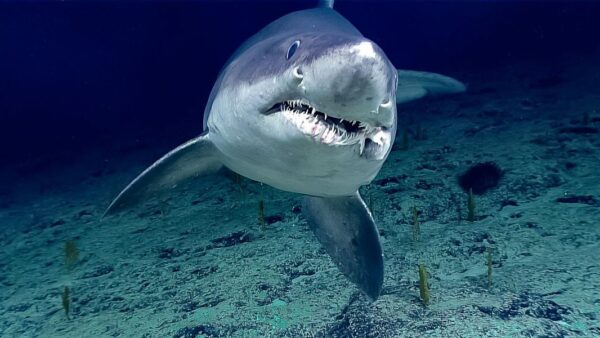A new peer-reviewed journal article attempts to unravel the mystery of the first confirmed records of the smalltooth sand tiger shark in the UK and Ireland.
In March 2023 a rare shark washed up on the shores of Co Wexford in what scientists believed was the first official record of the species in Irish waters. Two weeks earlier, another of the species had been found on the south coast of England. Then, in May, a third shark was found in Lyme Bay, again on England’s south coast.
As David Curnick of ZSL, lead author of the paper the Journal of Fish Biology, points out, there had now been three instances of the shark within two months, and this was a species that had never previously been recorded in the UK or Ireland or even that far north anywhere.
Photo: NOAA/Creative Commons
What is a smalltooth sand tiger shark?
Dr Jenny Bortoluzzi, research fellow at Trinity College Dublin, says in conversation with RTÉ: “A smalltooth sand tiger shark is a type of shark that would spend a lot of its time towards the bottom of the sea. It lives mostly in deep waters and they’re found in the Mediterranean Sea, but also in Colombia and in various places in the world where they would live below 200 metres. Occasionally they will come up in groups towards the surface,” says Bortoluzzi.
Why were the sharks in UK and Irish waters?
Researchers examined the sea bottom temperatures in the Celtic Sea and English Channel at the time of the strandings and in the months prior.
They found that the water temperatures in summer 2022 were considerably higher than the average for that time of year, and these conditions persisted into winter and through to 2023. Scientists believe that the individuals followed the warming waters up and into UK and Irish waters, expanding their range northwards.
With waters warming in recent years due to climate change and expected to continue to warm over the coming decades. Therefore, researchers believe there will be further sightings of smalltooth sand tiger sharks in coming years.
The evidence regarding the reasons for the strandings is less clear, with no single clear factor being established.
You can read further details on this story here, and from ZSL and RTÉ. The full paper in the Journal of Fish Biology can be read here.
